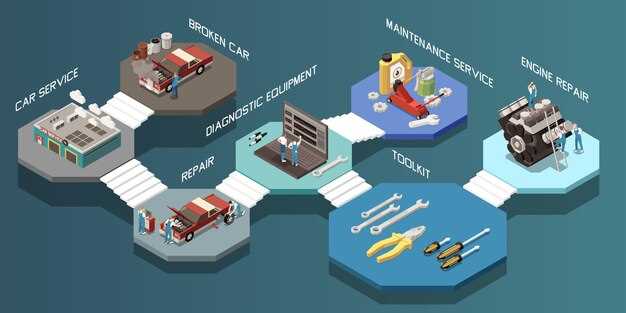
In the world of automotive performance, engine tuning and ECU remapping have become vital practices for enthusiasts looking to maximize their vehicle’s potential. ECU, or Engine Control Unit, plays a crucial role in determining how an engine performs by regulating fuel injection, ignition timing, and other parameters. Through effective remap techniques, drivers can unlock significant power gains and improve overall efficiency.
The process of ECU remapping involves modifying the software that controls the engine’s performance. This modification can lead to enhanced throttle response, increased horsepower, and improved torque, all while ensuring that the vehicle operates within the limitations of its mechanical components. Understanding the principles behind engine tuning is essential for achieving optimal results without compromising reliability.
This guide will explore various engine tuning methods, focusing on different ECU remapping strategies that cater to various performance goals. From basic adjustments to advanced tuning techniques, we will provide insights into how enthusiasts can safely and effectively enhance their vehicles’ performance. Whether you are a novice looking to dip your toes into the tuning world or a seasoned veteran seeking new methods, this guide will serve as a comprehensive resource.
Understanding ECU Architecture and Functionality

The Engine Control Unit (ECU) serves as the brain of modern vehicles, managing various engine functions essential for optimal performance. The architecture of an ECU is typically divided into several key components: the microcontroller, memory, input/output (I/O) interfaces, and various sensors. Each of these components plays a crucial role in how the ECU functions and operates.
Microcontroller: At the core of the ECU lies the microcontroller, which processes information from various sensors and executes control strategies. It is responsible for interpreting data from the engine’s operating parameters, such as throttle position, air-fuel ratio, and engine temperature. This data allows the microcontroller to make real-time adjustments to optimize performance.
Memory: The ECU architecture includes two types of memory: volatile and non-volatile. Volatile memory is used for temporary data storage during operation, while non-volatile memory retains crucial information even when the vehicle is turned off. This includes calibration data and fuel maps, which are critical for functions like remapping the ECU for enhanced performance.
Input/Output Interfaces: The I/O interfaces facilitate communication between the ECU and various sensors and actuators throughout the engine. Inputs from sensors provide the ECU with real-time data, while outputs control actuators to modify engine functions, such as fuel injection timing and the ignition process. This bidirectional communication allows for precise engine management, which is key to achieving desired performance levels.
Understanding how the ECU processes data is essential for effective tuning and remapping. By accessing the ECU’s memory and adjusting its parameters, enthusiasts can fine-tune engine performance characteristics, leading to improved power, efficiency, and responsiveness. Proper ECU remapping can significantly enhance a vehicle’s overall driving dynamics, making it a popular modification among automotive enthusiasts.
In summary, the architecture and functionality of the ECU are complex yet vital to effective engine management. Grasping how these components work together not only aids in better understanding vehicle performance but also provides a foundation for effective ECU remapping techniques that cater to specific driving needs and preferences.
Step-by-Step Process of ECU Remapping
ECU remapping is a critical process for optimizing engine performance and efficiency. This guide provides a comprehensive step-by-step approach to effectively remap your vehicle’s ECU.
Step 1: Understanding Your Vehicle’s ECU
Before beginning the remapping process, it’s essential to comprehend the role of the Engine Control Unit (ECU). The ECU manages various engine functions such as fuel injection, ignition timing, and boost pressure. A thorough understanding of these parameters will aid in making informed adjustments.
Step 2: Obtain Necessary Tools and Software
Gather the required tools, including an OBD-II interface, a laptop or compatible device, and ECU remapping software. Popular software options include EcuTek, HP Tuners, and Cobb Tuning. Ensure that the software is compatible with your vehicle’s ECU.
Step 3: Create a Backup of the Original ECU Map
Always start by creating a backup of the original ECU mapping. This step is crucial in case you need to revert to the factory settings. Use your remapping software to download the existing data from the ECU, ensuring that it is saved securely.
Step 4: Analyze Data and Identify Performance Goals
Review the original ECU map and analyze its parameters. Identify areas for improvement, such as fuel efficiency, power output, or throttle response. Set specific performance goals to guide the remapping process.
Step 5: Make Adjustments in the Map
Utilize the remapping software to make precise adjustments to the ECU settings. Common modifications include altering fuel delivery maps, ignition timing, and boost levels. Pay close attention to the vehicle’s performance indicators to ensure that adjustments do not lead to potential engine damage.
Step 6: Reupload the Remapped ECU Data
Once adjustments are complete, reconnect the OBD-II interface to the vehicle and upload the new map back to the ECU. This process may vary slightly depending on the software used, so follow the specific instructions provided by your software.
Step 7: Test the Vehicle Thoroughly
After uploading the new ECU map, conduct thorough testing. Take the vehicle for a test drive to evaluate performance changes. Monitor key metrics such as engine temperature, air-fuel ratio, and boost levels. Make additional tweaks if necessary based on your findings.
Step 8: Fine-Tuning and Finalizing Changes
Fine-tune the ECU settings based on real-world testing. This step may require several iterations to reach the desired performance levels. Document each change for future reference and continuous improvement.
Step 9: Regular Monitoring and Maintenance
After remapping, it’s crucial to regularly monitor the vehicle’s performance. Check for any error codes and maintain the tuning to adapt to changes in driving conditions or wear and tear. Consistent maintenance will ensure the longevity of both the vehicle and the performance gains achieved through remapping.
Identifying Ideal Engine Tuning Goals
When embarking on the journey of engine tuning, it’s crucial to define clear and achievable goals. The first step in the remap and ECU tuning process is understanding what you want to achieve with your vehicle. Different applications call for different tuning outcomes, whether it be enhanced performance, improved fuel efficiency, or increased reliability.
Performance enhancement typically aims for increased horsepower and torque. If your objective is to achieve higher power levels, consider factors such as your vehicle’s current specifications, existing modifications, and intended use, such as racing or daily driving. Each of these factors can influence the effectiveness of the remap and the overall tuning strategies employed.
Fuel efficiency represents a different tuning direction, focusing on optimizing the air-fuel mixture and ignition timing to achieve better mileage. If reducing fuel consumption is your aim, ensure that your ECU remapping is tailored to minimize fuel use while maintaining acceptable performance levels. This goal often requires a careful balance to prevent sacrificing too much power.
Reliability is another vital consideration in engine tuning. Some enthusiasts prioritize engine longevity and stability over raw power. In such cases, tuning goals may involve smoothing out power delivery, improving engine response, and reducing stress on internal components. A proper ECU remap can significantly contribute to a more reliable engine operation while adhering to factory specifications.
Additionally, it’s essential to consider practical aspects such as emissions compliance and regional regulations. Tuning for performance should not compromise legal emissions requirements, so ensure any adjustments keep you within legal limits. This prioritization can prevent headaches related to legality and inspections down the line.
In summary, identifying ideal engine tuning goals involves a thorough understanding of your vehicle’s capabilities, your driving habits, and compliance requirements. By establishing clear objectives, you can tailor your ECU remap to best suit your needs, whether that’s boosting performance, improving efficiency, or ensuring long-term reliability.
Tools and Software for Effective ECU Remapping
ECU remapping requires specialized tools and software to ensure precision and effectiveness in tuning. These tools are essential for accessing the vehicle’s Engine Control Unit (ECU) and making modifications to optimize performance. Below are key categories of tools and software used in the remapping process:
- ECU Tuning Tools
- OBD2 Interfaces: Devices that connect to the car’s OBD-II port, allowing for data exchange between the vehicle’s ECU and a computer or tuning device. Examples include KESSv2 and Galletto.
- Bench Flashers: Tools that connect directly to the ECU through wiring, used for reading and writing data directly to the ECU chip. This method often allows for deeper tuning capabilities.
- Boot Mode Programmers: Required for tuning locked ECUs that cannot be accessed via OBD. These devices can read and write data at the chip level.
- Mapping Software
- WinOLS: A popular software used for editing and remapping ECU files. It allows users to visualize maps and parameters for effective tuning.
- ECM Titanium: This software provides a user-friendly interface for tuning, offering a range of pre-defined mappings and easy calibration features.
- Flash tool Software: Software platforms that integrate with tuning hardware, allowing for real-time adjustments and data logging during the remap process.
- Data Logging Tools
- Data Loggers: Devices that record real-time data from the engine during operation. This data is crucial for understanding performance issues and tuning the ECU effectively.
- Dyno Machines: Engine dynamometers provide precise measurements of power and torque, allowing tuners to see the effects of their remapping in a controlled environment.
Using the right combination of these tools and software can significantly enhance the effectiveness of ECU remapping. Proper tuning can lead to improved engine performance, better fuel efficiency, and a more responsive driving experience. It’s essential to choose reliable tools and stay updated with the latest software versions to ensure successful remapping outcomes.
Common Mistakes in Engine Tuning and How to Avoid Them

Engine tuning and ECU remapping can significantly enhance a vehicle’s performance, but common mistakes can lead to disappointing results or even engine damage. Understanding these pitfalls is crucial for anyone looking to optimize their vehicle’s capabilities.
One of the most frequent mistakes is failing to understand the specific requirements of the vehicle. Each engine has unique characteristics that require tailored tuning approaches. Before proceeding with a remap, it is essential to conduct thorough research on the engine’s specifications and limitations. This ensures that the tuning modifications align with the engine’s capabilities, preventing potential issues down the line.
Another common error is neglecting to use quality tuning software or having insufficient knowledge of the tuning process. Utilizing subpar software can lead to incorrect adjustments, resulting in poor performance or engine failure. It’s vital to choose reputable tuning platforms and, if necessary, consult with professional tuners who possess the expertise to achieve the desired outcomes effectively.
Overlooking necessary hardware upgrades is another crucial mistake. Increasing engine performance through remapping often requires supporting modifications, such as improved exhaust systems or upgraded fuel injectors. Failing to complement the remap with adequate hardware may lead to bottlenecks in performance and can even damage engine components.
Additionally, many tuners make the mistake of ignoring data logging during the remapping process. Monitoring engine parameters such as air-fuel ratio, ignition timing, and boost levels ensures that the adjustments yield the desired results without causing harm. Data logging provides crucial insights that guide the tuning process and helps troubleshoot any issues that arise.
Lastly, not thoroughly testing the vehicle after the tuning can be detrimental. It’s essential to conduct road tests and performance checks to evaluate the remap’s effectiveness. This post-tuning phase allows for the identification of any anomalies and necessary fine-tuning adjustments. Skipping this step can leave performance issues unaddressed.
By avoiding these common mistakes and adopting a methodical approach to engine tuning and ECU remapping, enthusiasts can enjoy significant improvements in their vehicle’s performance while maintaining reliability and longevity.
Monitoring and Adjusting Performance Post-Remap
After completing the remap of your engine’s ECU, it is essential to monitor and adjust the performance to ensure optimal functioning. The remap process alters various engine parameters, which can significantly impact performance, fuel efficiency, and overall drivability. Therefore, continuous performance tracking is crucial.
Initially, using diagnostic tools such as OBD-II scanners allows for real-time monitoring of engine parameters. Key metrics to observe include air-fuel ratios, boost pressure, coolant temperature, and throttle position. These data points help identify whether the remap has achieved the desired effects or if adjustments are necessary.
Next, pay attention to driving behavior and engine responsiveness. Conducting road tests under varying conditions helps assess the impact of the tuning. Observing throttle response, acceleration rates, and engine sound can indicate whether the remap meets performance expectations.
If discrepancies arise during monitoring, adjustments may be required. Fine-tuning parameters such as fuel maps and ignition timing can enhance performance further. This process often necessitates a gradual approach, making small incremental changes to observe their effects before proceeding with more significant adjustments.
Additionally, utilizing dynamometer testing provides an accurate measure of power output and torque levels. This method allows for an objective assessment of the remap’s effectiveness and can highlight areas for improvement. Comparing the results to pre-remap benchmarks ensures that performance enhancements align with expectations.
Remember that environmental factors can affect performance, too. Variations in altitude, temperature, and fuel quality may necessitate further adjustments to the remap. Frequent reassessment ensures the vehicle remains tuned to perform optimally under different conditions.
In conclusion, ongoing monitoring and adjustment post-remap is vital for achieving sustained performance gains. By leveraging diagnostic tools, road testing, dynamic assessments, and understanding environmental influences, enthusiasts can ensure their engine tuning efforts yield the best possible results.
